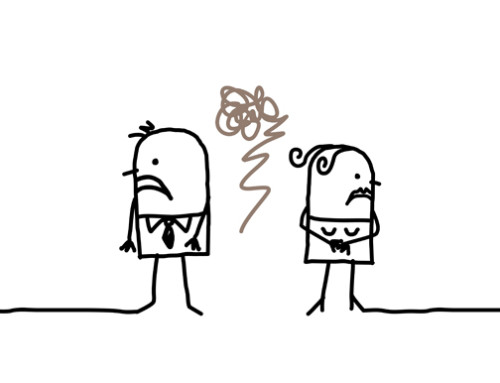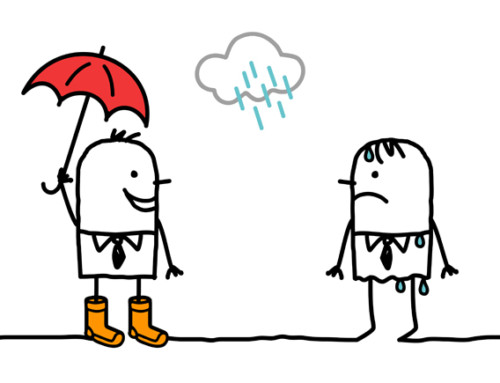In this article, I discuss findings from research and from my experience on the effectiveness of in-person therapy compared with other options.
Estimated reading time: 5 minutes.
For the first several years of my career, I did therapy with clients in only one form—in person and face-to-face. Over time, circumstances occasionally led me to conduct sessions with clients using other modes including virtual or video, phone, and email. The coronavirus pandemic resulted in the use of these alternatives to in-person sessions for me and other therapists becoming more frequent.
Now that many therapists have returned to the pre-pandemic routine of conducting most of their sessions in person, I thought it would be helpful to discuss the effectiveness of in-person therapy compared with the alternatives. Given that many therapists and clients have considered continuing the use of these alternatives, such a discussion could help clients make informed choices regarding their preferred therapy mode. In the following sections, I will discuss findings from research and from my experience on the effectiveness of in-person therapy compared with other options.
Comparing therapy done in person and by video
Research indicates that therapy is equally effective whether done in person compared with therapy done by video. This means that, on average, the two forms of therapy do not differ in their effectiveness. These findings fit with my experience using the two forms of therapy.
It does not surprise me that in-person therapy and video therapy are equally effective. In both forms of therapy, the factors which are integral to effective therapy can be harnessed. The two most prominent factors are client characteristics and a positive relationship between the therapist and the client.
Regarding client characteristics, I have found that if the client and I can communicate—whether in person or by video–we are able to use their positive characteristics to help them address their issues. For example, clients who are conscientious typically progress more in therapy whether the sessions are done in person or by video.
As for the client-therapist relationship, I have been able to build positive working relationships with clients whether the sessions occur in person or by video. As long as we can see and hear each other, the mode of communication does not appear to matter in terms of the ability to foster a strong therapeutic relationship.
Factors favouring in-person therapy over therapy by video
Even though you are likely to benefit equally from therapy done by video compared with in-person therapy, there are factors which suggest that in-person therapy is likely to lead to better outcomes. These include:
(1) Technical issues. Some clients do not have the technical capabilities in terms of equipment and internet access or performance to allow for effective communication by video;
(2) Privacy issues. In-person therapy has the guarantee of a private place to discuss issues without (for the most part) interruptions. In contrast, therapy done by video often has challenges in this regard. For example, clients who live with one or more people may either not have their own private space or, if they do, they may have concerns about being interrupted or being listened to behind closed doors.
I have had some clients get around these issues by having sessions in their vehicles or even outside in a park or other location. However, these options are typically not as effective compared to the client having their own space where they can speak without concerns about privacy violations or interruptions;
(3) Client age. I have worked effectively with adults and teens by video. However, I have had less success working with young children using this format. Just as young children found it most challenging to do school during the pandemic by video, they are also generally less able to benefit from therapy done by video;
(4) Client beliefs. Beliefs about whether you can succeed have a significant effect on your likelihood of success. This ‘self-fulfilling prophecy’ manifests itself in beliefs about whether you can succeed in therapy generally and whether you can succeed using a specific therapy mode. Therefore, clients who believe that they can benefit from therapy done by video are more likely to do so compared with clients who do not believe they can benefit from it.

Factors favouring therapy by video over in-person therapy
Provided that the client has things in order from a technical, privacy and beliefs standpoint and is in their teens or older, there are factors which favour doing therapy by video compared with in-person therapy. For example, therapy by video can be done with the therapist and client in separate locations which would preclude in-person sessions. I have done therapy sessions by video with clients who are in a different country from the one in which I work and live.
Video therapy sessions also save clients the time it takes to travel to and from the therapist’s office along with avoiding possible hassles and expenses involving parking or using public transit. When clients are pressed for time or have another engagement which might prevent them from attending an in-person session, video sessions are often a viable alternative. Inclement weather or traffic congestion might make going to the therapist’s office a daunting prospect for which doing a session by video would be welcome.
Sometimes the client’s issues make video sessions preferable or even their only option. For example, some clients with anxiety issues may be housebound because they believe that leaving their home would cause them to experience anxiety at an intolerable level.
Other alternatives to in-person therapy
Although I have done sessions with clients by phone less often than video sessions, I have found them for the most part an effective alternative. Just as communicating by video allows for client characteristics and a strong therapeutic relationship to lead to success for the client, having sessions by phone also typically lets these factors ‘work their magic’ for the benefit of the client.
Because having sessions by phone has the missing visual element which both in-person and video sessions have, clients typically use it only if video sessions are not an option. However, I can say from experience that having only voice communication can often be helpful in helping clients to focus and in building relationships with clients. This reminds me of the observation that radio is considered a more intimate medium than television in terms of the closeness listeners feel with the hosts/performers.
I have had ‘sessions’ with clients by email on rare occasions when various factors made it difficult to have sessions in person, by video or by phone. The format entailed the client and I exchanging email messages regarding their issues.
Because email communication lacks several features of the other therapy modes, I have used it sparingly. However, if it is the only alternative it is still often preferable to having no therapy. My most recent success with a client in email therapy was helped by our having met previously using one of the other therapy modes.
Choosing a mode of therapy which is a good fit for you
As with choosing a therapist, it is important to choose a therapy mode which is a good fit for you. In that regard, people can often get a better sense of whether a therapist or a mode of therapy fits them by trying them out.
I and some other therapists offer a free consultation which can be used for this purpose. If you are unsure of whether doing therapy using an alternative to in-person sessions would be a good fit for you, you may find it helpful to take advantage of this option.
May you choose a mode of therapy which is a good fit for you,
Dr. Pat






Leave A Comment